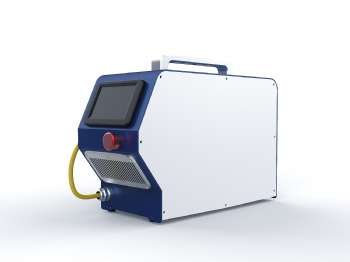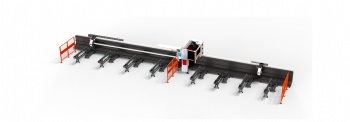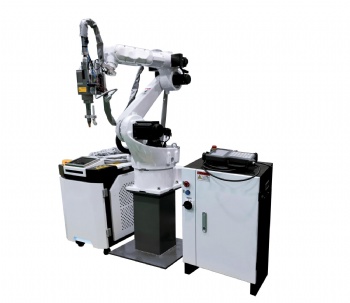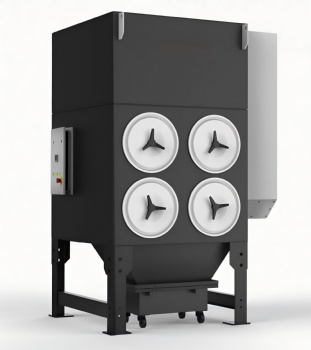News
The Trend of Miniaturization of Fiber Lasers
In recent years, 10,000W lasers have become a standard product in the field of industrial lasers. The popularity of 10,000W lasers has greatly improved the efficiency and capability boundaries of industrial processing. However, with a large number of manufacturers pouring into Wanwa Circuit, homogeneous competition has also plunged this market into a red ocean of "price war". This environment has also caused the growth of China's fiber laser market to fall into a quasi-stagnant situation of "seemingly rising but not rising".
Breakthrough attempt of fiber laser homogenization
In order to break this market dilemma, many companies began to seek differentiated competition routes. At present, for fiber lasers, the three obvious routes are high power, high brightness, and miniaturization.
High power has been the main theme of fiber laser development in the past few years. With the popularization of 10,000 watt lasers, 30,000 watts, 40,000 watts, and 50,000 watts have entered the metal processing market one after another. For the laser itself, the core difficulty lies in the power of the device Tolerance and long-term stability; for practical applications, the lack of stable and reliable supporting components is the biggest obstacle to its development.
High brightness is actually a return to the basic properties of lasers. By increasing the energy density per unit area, the effect of high brightness and low power can be replaced by high power. At the same time, it has obvious advantages in the fields of high-reflection material processing and advanced manufacturing. Stability, control of nonlinear effects.
Miniaturization is a key to open a new world of laser applications - smaller volume, lighter weight, higher integration, subverting the past cognition of laser processing, and gave birth to such as handheld laser welding, handheld laser cleaning, etc. Portable laser tools have greatly promoted the development of laser applications.
The author has discussed the development trend and market situation of high power and high brightness many times in the past, and today I will focus on the market trend of miniaturization.
The history of miniaturization of 10,000-watt laser
Since the power of fiber laser can be increased by module superposition and beam combining, the overall volume of the laser is also increasing during the process of increasing the power of the fiber laser. In 2017, a 6kW fiber laser that combines multiple 2kW modules entered the industrial market. In the following year or two, 8kW, 12kW, 15kW, and 20kW lasers appeared one after another, but at that time even 20kW lasers were combined on the basis of 2kW or 3kW, which resulted in a huge volume of finished products. Although the performance has been improved, the excessive volume also brings more troubles to the user's transportation and assembly. With the increasingly obvious demand for 10,000 watts, laser manufacturers began to think about how to reduce the volume of the whole machine.
The main idea in the early stage is to increase the power of a single laser module, gradually increase the power of the past 3kW to 4kW and 5kW, and reduce the volume by reducing the number of beam combining modules of the 10,000-watt laser. However, at this stage, the sudden decrease in the number of modules and the sudden increase in the power of a single module pose a great challenge to the stability of each core of the laser.
When the above challenges are overcome one after another, another major advantage of single-module lasers begins to emerge—the beam quality is greatly improved without combining single-module lasers, and the performance of multi-mode lasers is significantly improved in the fields of thin plate processing and precision manufacturing. As a result, high-power single-module lasers began to become independent products and integrated with laser equipment.
At this stage, domestic laser manufacturers have carried out a large number of optimizations and improvements for the application scenarios and optical characteristics of single-module lasers. After several years of hard work, a single-module 12kW laser came out. Compared with the multi-mode 12KW laser, the volume of the single-module 12kW laser is reduced by about 60%, the weight is reduced by about 40%, and the processing capacity on some materials is comparable to 15kW. It can be said that the core idea at this stage is to replace the multi-mode combined laser in some application scenarios with a smaller single-module laser.
Breaking new ground for miniaturized lasers
It can be said that this subversive size reduction has a huge impact on the downstream, and the most obvious one is the handheld laser welding market. Early handheld laser welding machines were equipped with chillers and old-fashioned 1000W single-module lasers, and the volume of the cabinet reached 1.05m3 (equivalent to the volume of an old-fashioned washing machine). With the market explosion in recent years and users' requirements for portable, smaller and more portable has become the consistent pursuit of handheld welding manufacturers. After subverting the "bone shrinkage" of the Lightning series lasers, it is possible to install two handheld welding machines in one trunk.
For sheet metal processing users, this new form of drawer design allows the laser to be shipped together with the complete set of equipment, and it is truly disassembled and ready to use, and allows users to say "goodbye" to the traditional laser air-conditioned room that occupies an area ", and can save more than 30% of equipment installation time.
Another focus of attention is that the cost of shipping will rise sharply in 2022, which will increase the transportation costs of export companies. The size of the laser is greatly reduced, which means that the number of lasers that can be loaded in the same container is greatly increased, and it also means that the number of containers required for the same number of lasers is reduced, which can save a lot of freight for enterprises. Especially overseas agents can also gain greater competitive advantages due to reduced logistics costs.
Judging from the current market data, miniaturized lasers have been initially accepted by the market. In the first year when Keplin released the Lightning series lasers, the sales volume of this series of lasers was nearly 10,000 units, which drove Keplin to achieve an impressive record of year-on-year growth in fiber laser shipments. It can be said that in the current miniaturized laser circuit, Caplin has become a well-deserved representative of leading companies.
Categories
Contact Us
- +86-13724554746
- +86-15291096679
- alex@dapengcnc.cn
- +86-13724554746




